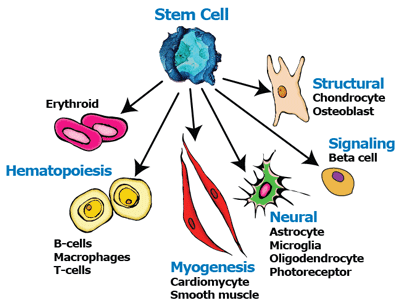Transitioning epithelial cells to mesenchymal cells enhances cardiac protectivity

|
Cell-based therapies have been shown to enhance cardiac regeneration, but autologous (patient self-donated) cells have produced only “modest results.” In an effort to improve myocardial regeneration through cell transplantation, a research team from Germany has taken epithelial cells from placenta (amniotic epithelial cells, or AECs) and converted them into mesenchymal cells. After transplanting the transitioned cells into mice modelling a myocardial infarction, the researchers found that the epithelial-to-mesenchymal transition (EMT) was beneficial to cardiac regeneration by lowering infarct size. They concluded that EMT enhanced the cardioprotective effects of human AECs.
The study will be published in a future issue of Cell Transplantation but is currently freely available on-line as an unedited early e-pub at: http://www.ingentaconnect.com/content/cog/ct/pre-prints/content-ct1046Roy.
The authors noted that AECs have been shown to share characteristics of pluripotent cells that are able to transform into all other kinds of cells, and that their isolation and clinical-grade expansion of AECs is “relatively straightforward.”
“Our hypothesis was that EMT would improve cardiac regeneration capacity of amniotic epithelial cells by increasing their mobility and extracellular matrix modulating capacity,” said study corresponding author Dr. Christof Stamm of the Berlin Brandenburg Center for Regenerative Therapies, Berlin, Germany. “Indeed, four weeks after the mice were modeled with myocardial infarction the mice subsequently treated with EMT-AECs were associated with markedly reduced infarct size.”
According to the researchers, as a result of the EMT process the AECs lost their “cobblestone” structure and acquired a fibroblastoid shape which was associated with a number of biological alterations that ultimately aided their mobility and altered their secretions.
One direct result of the EMT-AEC treatment was that EMT-AEC-treated hearts displayed “better global systolic function and improved longitudinal strain rate in the area of interest.”
The researchers added that while AECs may be useful in the context of cardiovascular regeneration, it is unclear whether the usefulness requires “actual stemness” or “pluripotency-unrelated secretory mechanisms.”
“Blood vessel density was increased in both AEC and EMT-AEC-treated hearts and we conclude that EMT enhances the cardioprotective effects of human AECs,” they wrote.
“This study highlights how AECs are a potentially useful stem cell population whose use can be maximized by a transformation, such as EMT, prior to transplantation” said Dr Amit N. Patel, director of cardiovascular regenerative medicine at the University of Utah and section editor for Cell Transplantation. “This was demonstrated in a myocardial infarction model but further study is necessary to confirm whether this transformation is relevant for other diseases (and other cell types)”.
###
Contact: Dr. Christof Stamm, Deutches Herzzentrum Berlin, Augustenburger Platz 1, 13353 Berlin, Germany.
Tel: +49 30 4593 2109
Fax: + 49 30 4593 2100
Email: .(JavaScript must be enabled to view this email address)
Citation: Roy, R.; Kukucka, M.; Messroghli, D.; Kunkel, D.; Brodarac, A.; Klose, K.; Geißler, S.; Becher, P. M.; Kang, S. K.; Choi , YH.; Stamm, C. Epithelial‐to‐mesenchymal transition enhances the cardioprotective capacity of human amniotic epithelial cells. Cell Transplant. Appeared or available online: November 20, 2013.
The Coeditors-in-chief for CELL TRANSPLANTATION are at the Diabetes Research Institute, University of Miami Miller School of Medicine and Center for Neuropsychiatry, China Medical University Hospital, TaiChung, Taiwan. Contact, Camillo Ricordi, MD at .(JavaScript must be enabled to view this email address) or Shinn-Zong Lin, MD, PhD at .(JavaScript must be enabled to view this email address) or David Eve, PhD at .(JavaScript must be enabled to view this email address)
###
Robert Miranda
.(JavaScript must be enabled to view this email address)
Cell Transplantation Center of Excellence for Aging and Brain Repair
Print Version
Tell-a-Friend comments powered by Disqus





